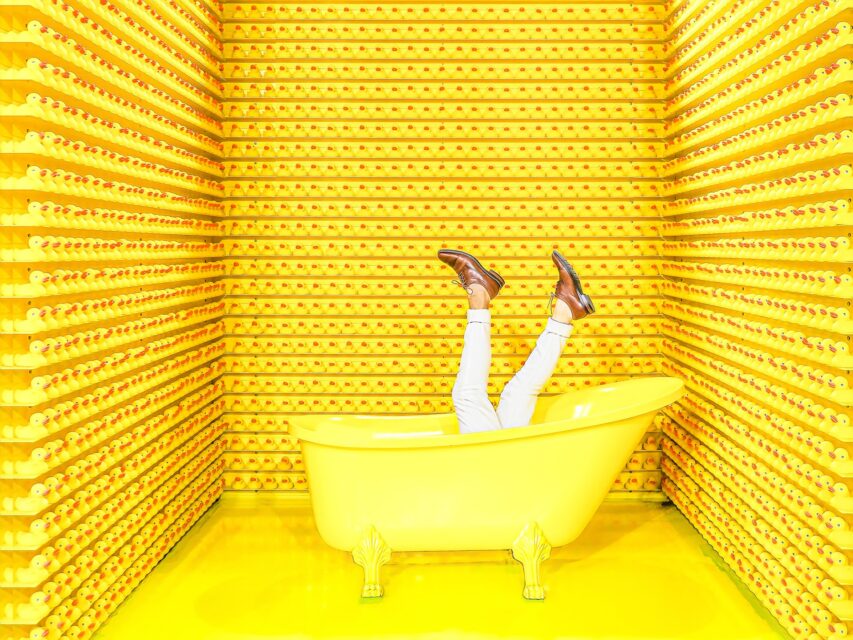Debunking UX Myths
Tackling some of the most mistruths and myths common in the UX industry
When myths are allowed to flourish, they can become barriers that prevent us from going into certain areas or acquiring the information we need to do our jobs properly. As a UX Designer, I strive to learn as much as I can about what people think about what I do. To be successful and do valuable work, those joining the industry should have a clear understanding of what their responsibilities are and are not as the market shifts toward an emphasis on the customer experience.
Complexity is one of the most frequently mistook areas for sophistication or success in the field of UX+UI Design.
I myself have never felt more emphasis as a designer to create websites that push the boundaries of what was previously thought possible. A variety of elements influence whether or not a website design is successful, usable, high-converting, or even appealing. There are plenty of tools to track these results once they’ve been deployed, but that doesn’t negate the importance of following UX best practises from the start.
I want to address several UX design myths that are costing businesses millions in revisions and conversions, and how to battle them by aligning user experience, clear objectives, strategy, and creative. After all, design is supposed to help simplify processes and communication, not make them nicer.

“It all comes down to style.”
I realised that this was a form of intuitive working. This seems to be something which hasn’t so much been researched or documented which is quite interesting in itself. Whilst ‘intuitive eating’ is a buzz of resources and articles, ‘intuitive working’ not so. One of the main people speaking about this method is creative coach, Jen Carrington, who credits her productivity, energy and creativity to intuitive working.
Some brands, designers, and agencies make the mistake of believing that their aesthetic, style, or design direction is more essential than the site’s purpose, content, usability, accessibility, or even the site’s users. Every design decision in a website project has ramifications and effects; some might cripple performance, while others can lead to a terrible user experience. I appreciate the desire to innovate, to produce something truly unique and new, but if it comes at the expense of other critical concerns, it may be too far.
The appearance and feel of a website should enhance rather than detract from the user experience.
I’m not suggesting that style, design, or art direction aren’t vital; on the contrary, I believe they are essential. They must, however, be deliberate and amenable to iteration. The appearance and feel of a website should enhance rather than detract from the user experience. One of the advantages of a multidisciplinary team working closely together is that multiple viewpoints may be brought to bear on the design, improving it and making it more useable.
A few examples of how style can obstruct a positive user experience:
- Forms hidden at the bottom of landing pages and contact pages
- Pages without any kind of CTA or actionable task
- Animations and transitions that impede on user’s expectations of how to navigate or scroll
- Buttons that lack contrast, are small, or don’t resemble buttons
- Content that requires a hover effect but lacks mobile consideration
“User Experience is only a design responsibility.”
Everyone working in the project should, in theory, be interested in and concerned about the end user. These are some of the questions that everyone who touches a project, from sales, to Project Managers, Product Managers, and Developers should ask;
- Is it beneficial to the users?
- Is it related to the users’ requirements?
- Is it practical? Does the concept have any implications for usability or accessibility?
There is a lot of misunderstanding about UX, including who is responsible for it, what it means, and how it should be implemented. Some say it is just a part of digital strategy, while others believe it is a distinct discipline that should only be handled by an experienced UX expert. It is a responsibility that, in my opinion, should be shared and performed across disciplines. This is especially crucial when UX debt is involved in a project.
It’s crucial to have UX advocates in your business, and having a dedicated expert that spearheads the practise is obviously beneficial, but truly committing to a great user experience necessitates a user-focused team.
Great user experience is an iterative process that must be optimised, tested, and assessed on a regular basis. While this procedure can be time consuming, the benefits are substantial, and they have far more significance for brand perception and digital-based marketing goals than we might think.
“You don’t need to provide visual cues; users will understand it on their own.”
How can your users figure out how to use your site without visual clues, well-considered user paths, context, intelligible content, calls to action, and simple navigation? Many of the visual signals used by websites are purposefully subtle, so they are not immediately evident to the user. Some instances of user cues are as follows:
- Menu names that clearly communicate to users what the page is. If it’s too ambiguous – why would a user feel intrigued to click it? Fancy footwork in creative writing in navigations are a no no.
- Button-like calls to action with copy that explains what the user is clicking. If it looks like a button and it quacks like a button, it probably is a button. Boring buttons aren’t as entertaining, but if it looks like a button, people are more inclined to click on it.
- Contextualise and coordinated headlines, copy, and graphics. These three elements should aid communication and education rather than raise more doubts. Most users simply overlook images that are purely aesthetic, feel-good, or fluff, according to studies. If elements feels unconnected or unimportant from the others, it can lead to confusion and, in some cases, plain disinterest in the content.
It can be a startling experience when user cues are ignored. Where am I going with this? I’m not sure what I’m expected to do on this page. I’m unable to read the words. What is the point of this webpage?
“Innovation is more important than usability.”
This line of thinking is frequently the consequence of agencies, designers, and businesses believing that doing something unique or having a site that stands out from the crowd is enough to make it a market differentiator. Those in the creative profession, understandably, want to create truly distinctive experiences, especially in the context of a web that is becoming uniform. I’ve heard from a lot of clients that they don’t want their site to ‘just look the same’ as all the other sites. While no one wants their company’s website to appear like a dozen others in the sector, breaking traditions without concern for the customer can be risky.
Users are familiar with a convention and know how to utilise it, which is one of the reasons we find recurring design patterns on websites. Users complain on mass when websites and apps like Facebook or Instagram introduce new features or tweak their UI due to a lack of familiarity. Even those who don’t understand or consider UX, often comment and critique. Obviously, this does not preclude businesses from innovating or developing new interfaces or UX patterns, but such endeavours should not be undertaken lightly or solely for aesthetic reasons. If you’re going to push the boundaries, do it with intention.



